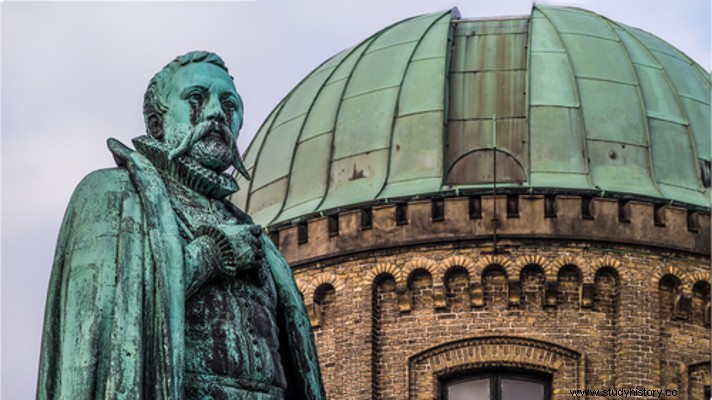
By Me. Cláudio Fernandes
The Modern Science , that is, the science that managed to articulate the method of observation and experimentation with the use of technical instruments (especially the telescope and the microscope), began to develop properly in 16th century Europe. The birth of this new science is seen by many historians as arevolution, given that in the ancient world and in the medieval world, investigations into natural phenomena (terrestrial and celestial), living organisms, among other things, did not make use of the technique and did not conceive the universe as something composed of the same uniform, susceptible matter to corrosion and finitude.
The universe, better said, the world, for the ancients and medievals, it was a closed system, with a very well defined and harmonious structure, roughly speaking:a cosmos. There was, according to Aristotelian terminology, the sublunar world (below the celestial spheres and the Moon), that is, terrestrial and finite - full of imperfections, and the supralunar world, whose celestial bodies could not have the same imperfections as the terrestrial ones. Such a conception was absorbed by the doctors of the Catholic Church in a complex and very fertile combination of the doctrine of creation and the investigation of nature. Added to this combination is the cosmological perspective developed by Ptolemy , who conceived of the Earth as the center of this cosmos harmonic.
With the so-called Cultural Renaissance , which took place in several regions of Europe between the 14th and 16th centuries, there was an intense exchange of knowledge regarding ancient treatises on astronomy and physics, as well as the improvement of navigation instruments, such as the telescope - which would later constitute the basis for the creation of the telescope, byGalileo Galilei . In northern Europe, in the region of present-day Poland, Germany and Holland, and in the south, especially in Italy – regions that were the stage of commercial development in this period, the Renaissance took root in several fields, mainly artistic and scientific.
Polish astronomer Nicolaus Copernicus he was the first to elaborate a hypothesis about the cosmos which differed radically from that of Ptolemy, which was in force until then. This hypothesis was that of Heliocentrism, whose postulate understood that the planets, including the Earth, revolved around the orbit of the Sun. From this, the Sun could be considered the center of the Universe. The Copernican hypothesis would be confirmed by another astronomer, the Italian Galileo Galilei.

Statue of Galileo (with his telescope) at the Uffizi Palace in Florence, Italy
Galileo was responsible for the creation of the telescope , decisive instrument for observation of celestial bodies. Through the telescope, Galileo could perceive imperfections in the Moon and other planets, a fact that ended up challenging the old conception of a cosmos closed. The historian of science Alexandre Koyré understands that the “destruction of this closed cosmos”, operated by Galileo, Joahannes Kepler, Tycho Brahe , among other scientists, inaugurates a new cosmology, or a new way of conceiving the physical world, which, from the 17th century onwards, would become that of the infinite universe .
The conception of an infinite universe presupposed a new language. Mathematics would be this new language. The world, according to Galileo, could be “read”, interpreted, through geometric characters. Mathematics and inductive logic, mixed with the philosophical conceptions of the 17th century, notably the rationalism of René Descartes and the empiricism of the English philosophers, stitched together the modern scientific system, whose development took place progressively until the advent of the Theory of Relativity by Einstein and Quantum Mechanics, by Heisenberg and Bohn, in the first half of the 20th century.
